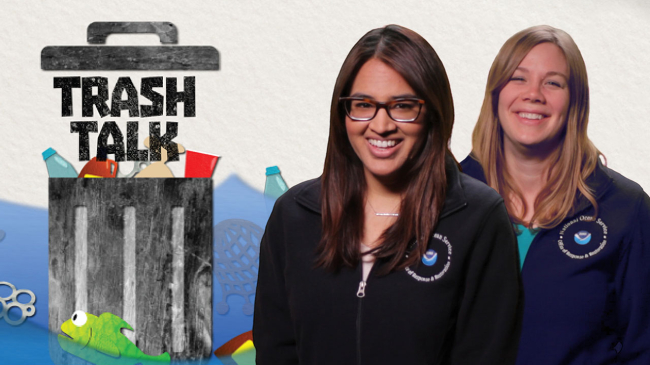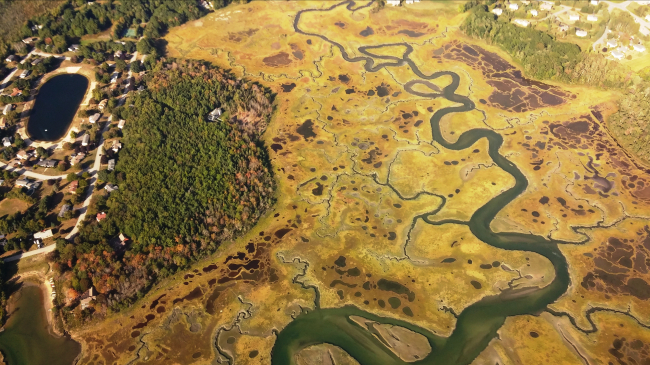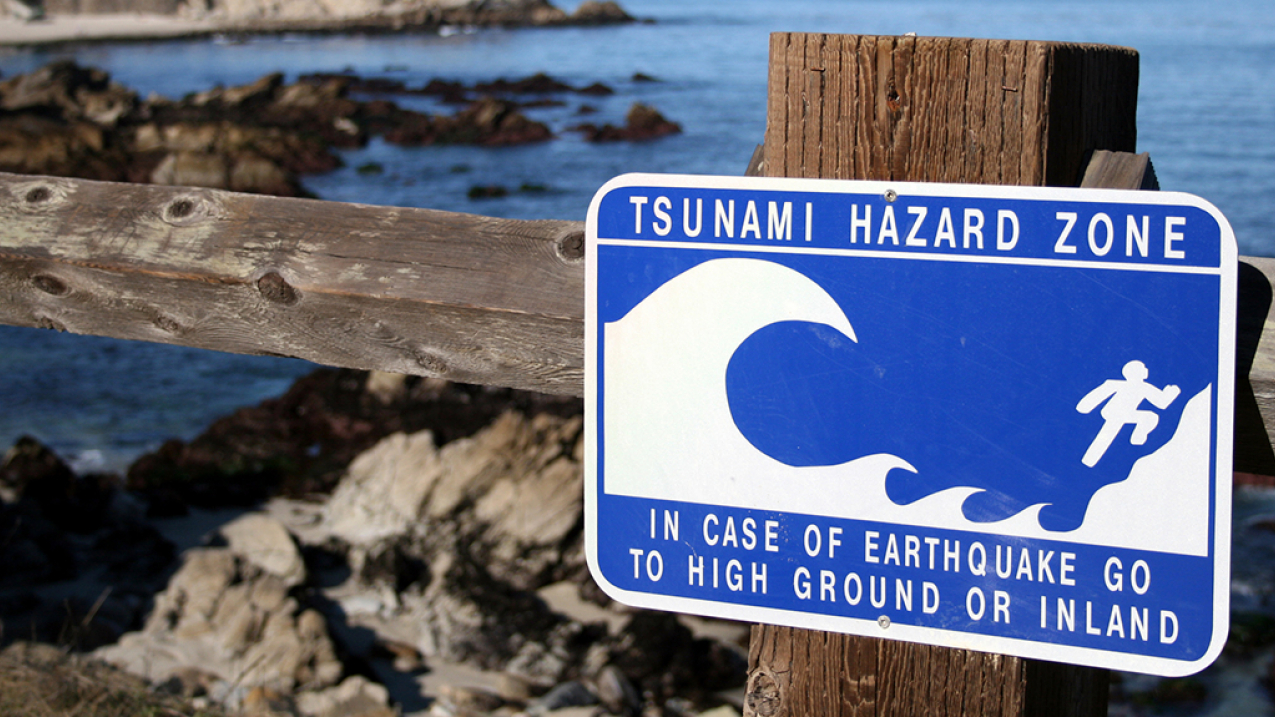
Tsunamai Hazard Zone. (Image credit: iStock)
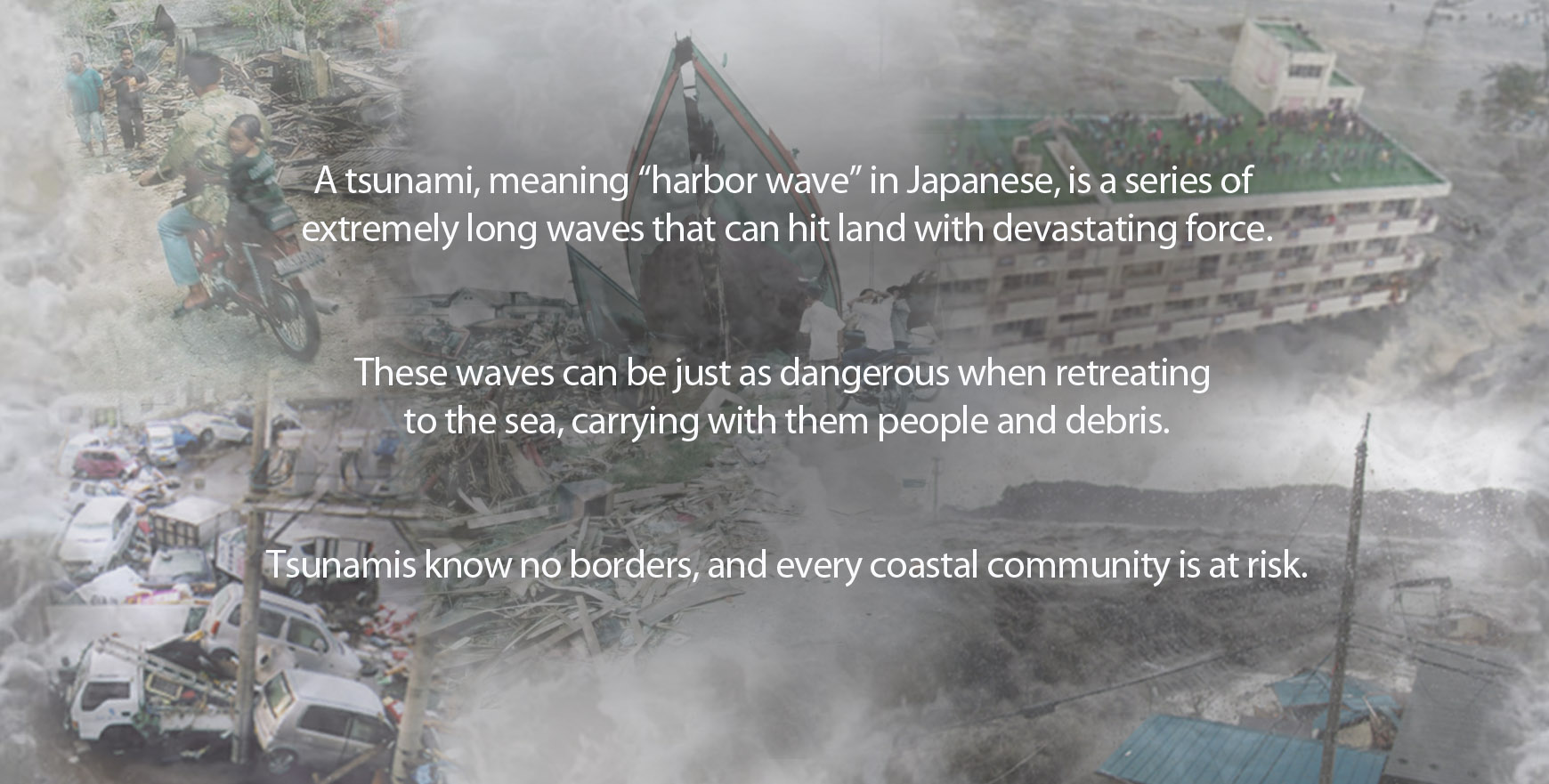
Tsunamis are usually triggered by large undersea earthquakes. Waves then radiate in all directions from the source of the earthquake.
Tsunamis can sweep across the sea at the speed of a jetliner.
In less than 20 hours, waves generated by the 2011 Japanese tsunami washed onto South American coasts, more than 8,000 miles away.
Using a NOAA tsunami forecast model, this animation shows the tsunami racing across the Pacific. Earthquake data were used to predict wave height, speed, and the impact of waves striking land.
Below is a glimpse of how NOAA and our partners help communities prepare for and mitigate, detect, forecast, and respond to tsunamis:
NOAA leads the U.S. Tsunami Warning System
The U.S. Tsunami Warning System is a partnership of local to international governments joined by organizations and industry. It has the following components:
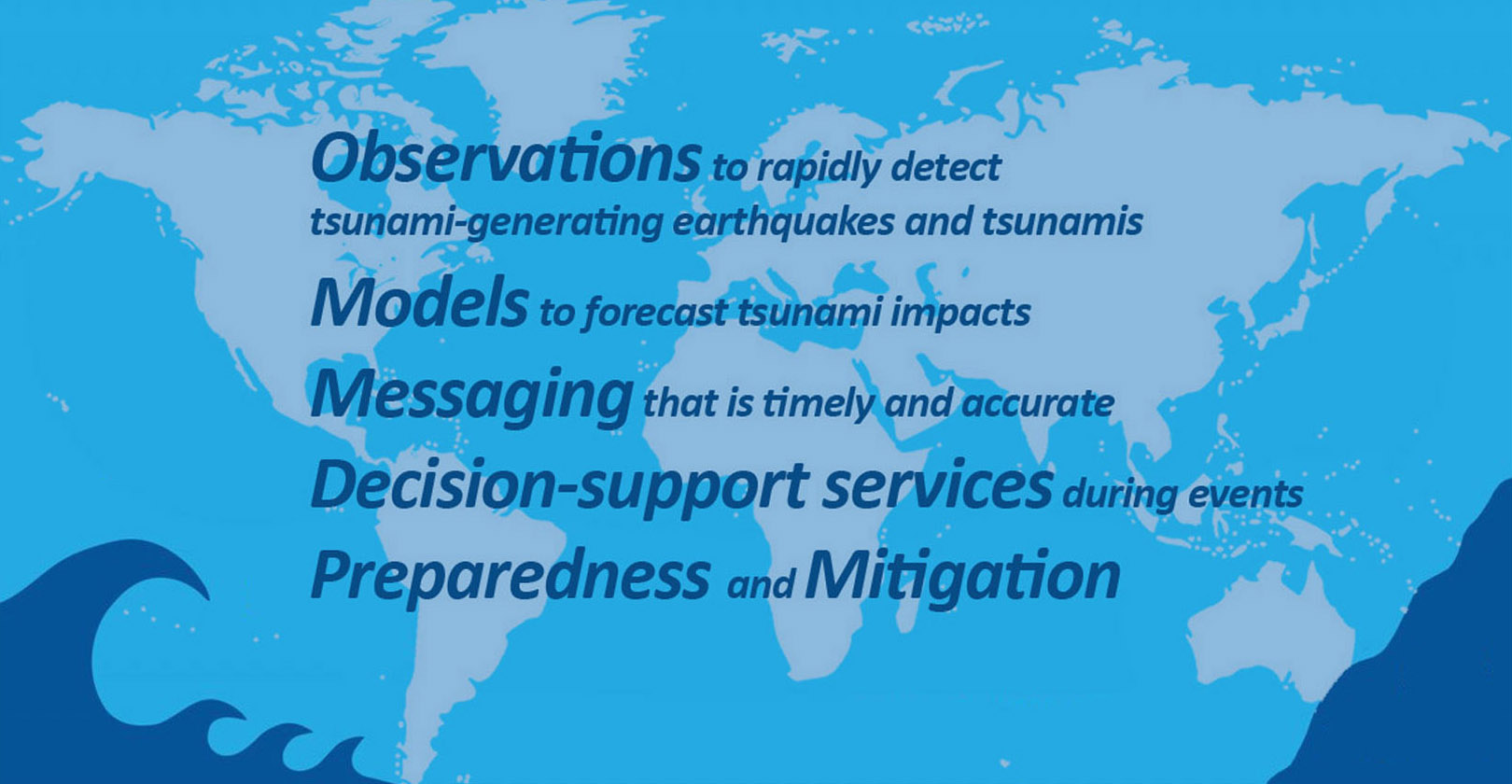
Tsunami Warning System minimizes human and economic loss
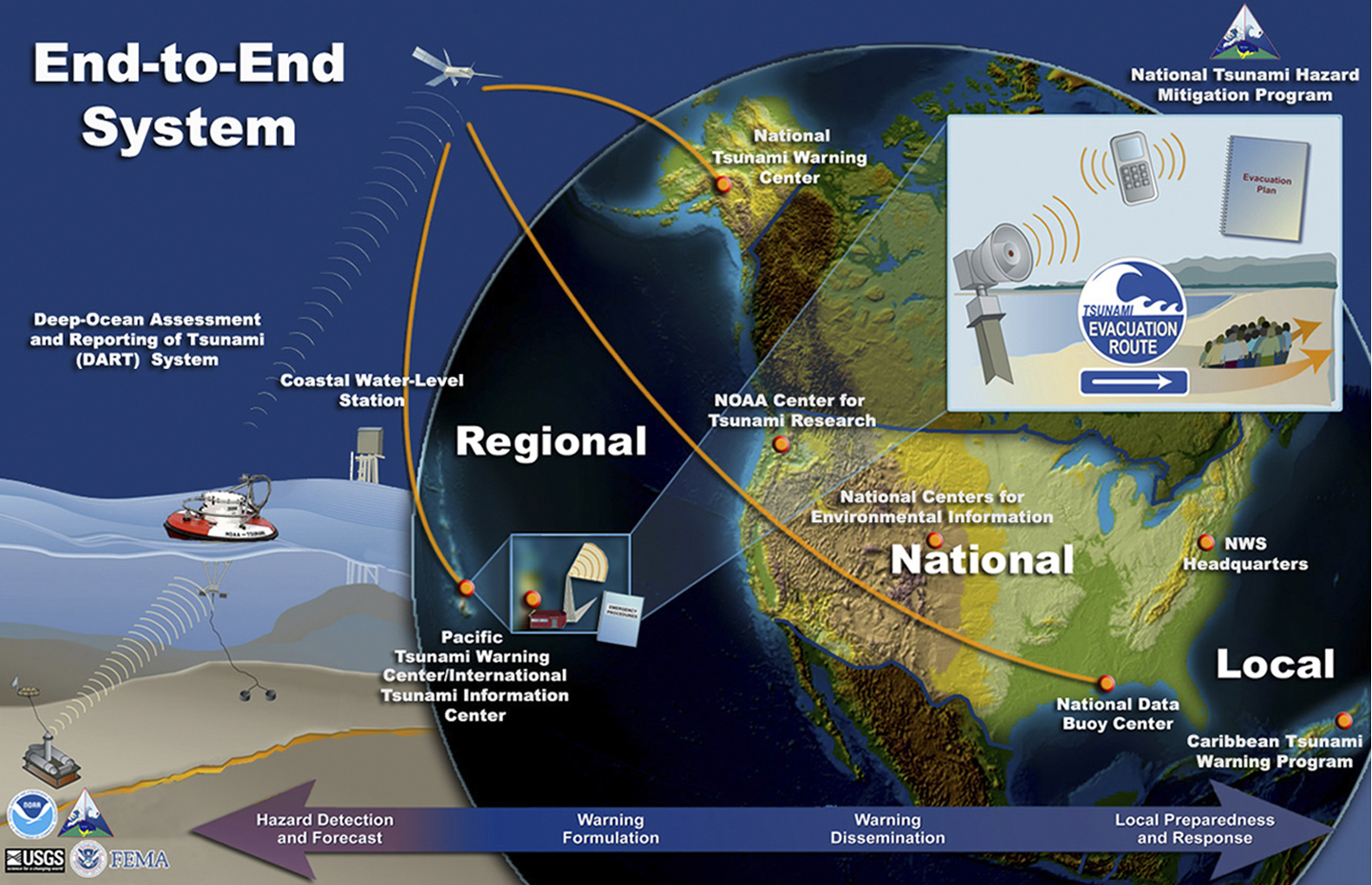
Preparedness builds resilience and is economically sound
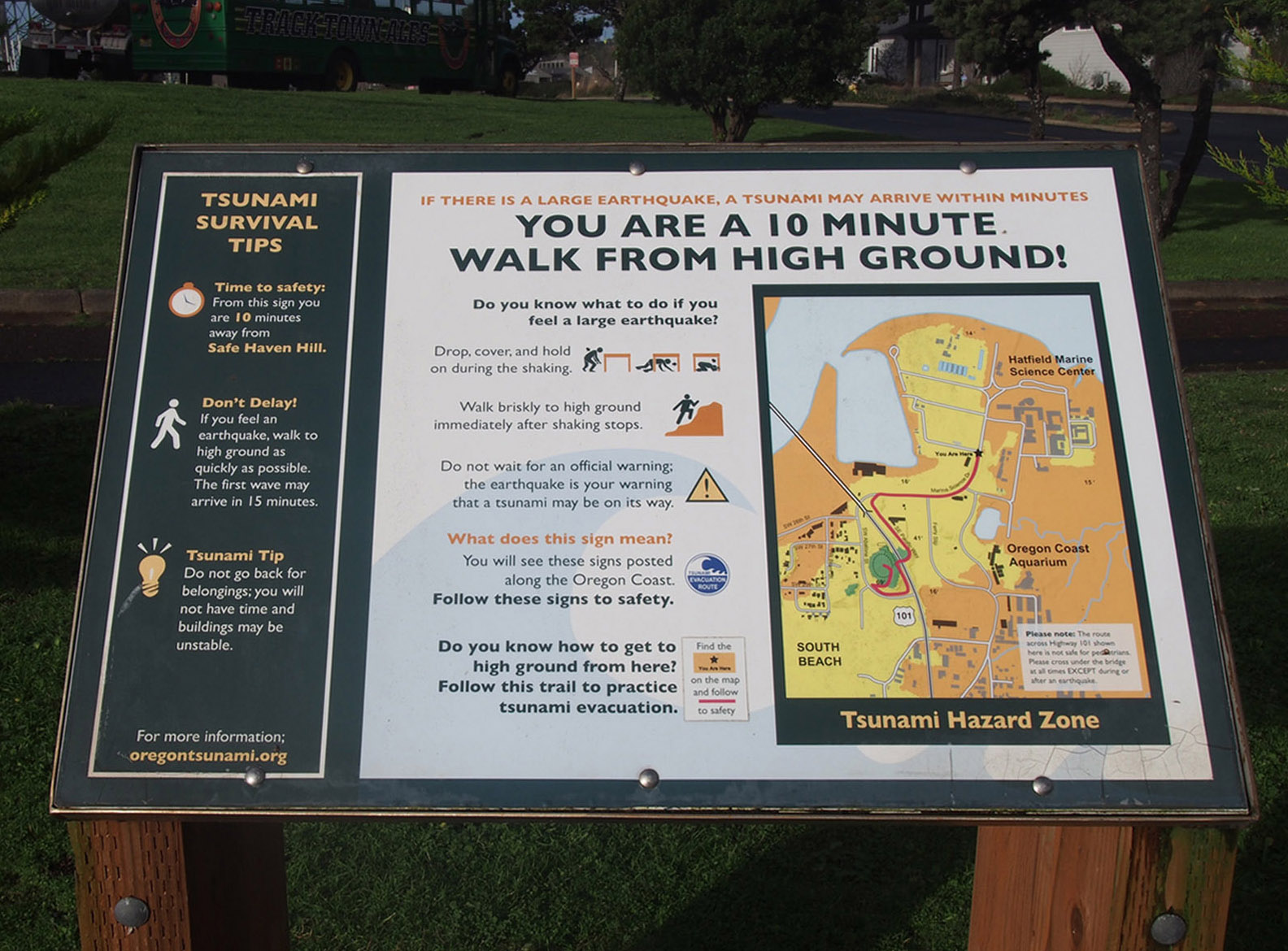
The NOAA-led National Tsunami Hazard Mitigation Program is a federal/state partnership that brings together expertise on many levels.
Partners include the Federal Emergency Management Agency, the U.S. Geological Survey, and 28 states and territories.
The partners work to reduce tsunami impacts by modeling and mapping tsunami hazards, helping to shape effective warning products, and educating about tsunami preparedness.
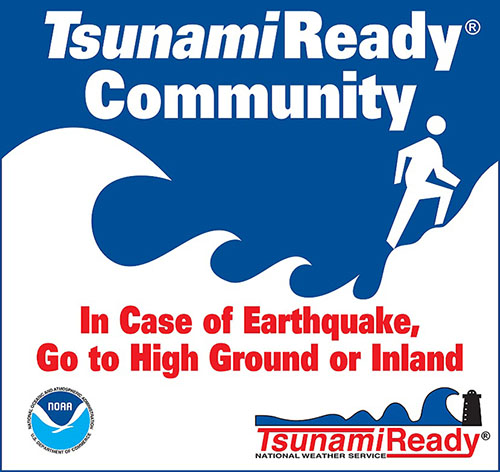
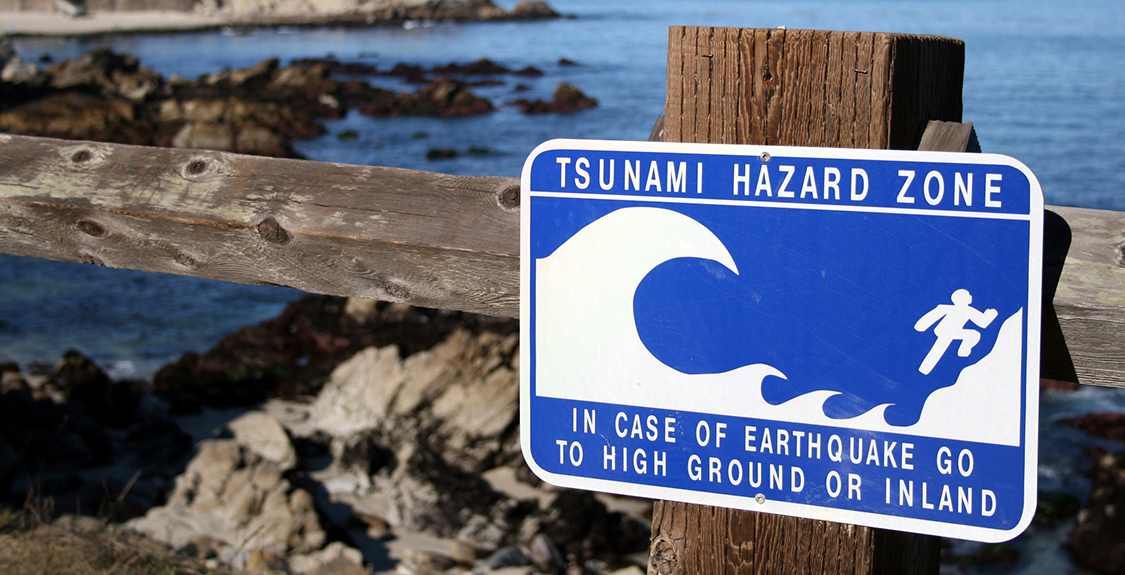
NOAA’s voluntary TsunamiReady® program helps communities minimize risk through better hazard assessment, planning, education, and warning communications.
Implemented by National Weather Service forecast offices, TsunamiReady is an active collaboration among federal/state/territorial and local emergency management agencies, community leaders, and the public.
The TsunamiReady program establishes guidelines and helps communities meet them. Once they do, the National Weather Service recognizes these communities as being TsunamiReady.
There are currently 199 TsunamiReady communities. UNESCO’s Intergovernmental Oceanographic Commission is leveraging TsunamiReady with international pilot programs offsite link.
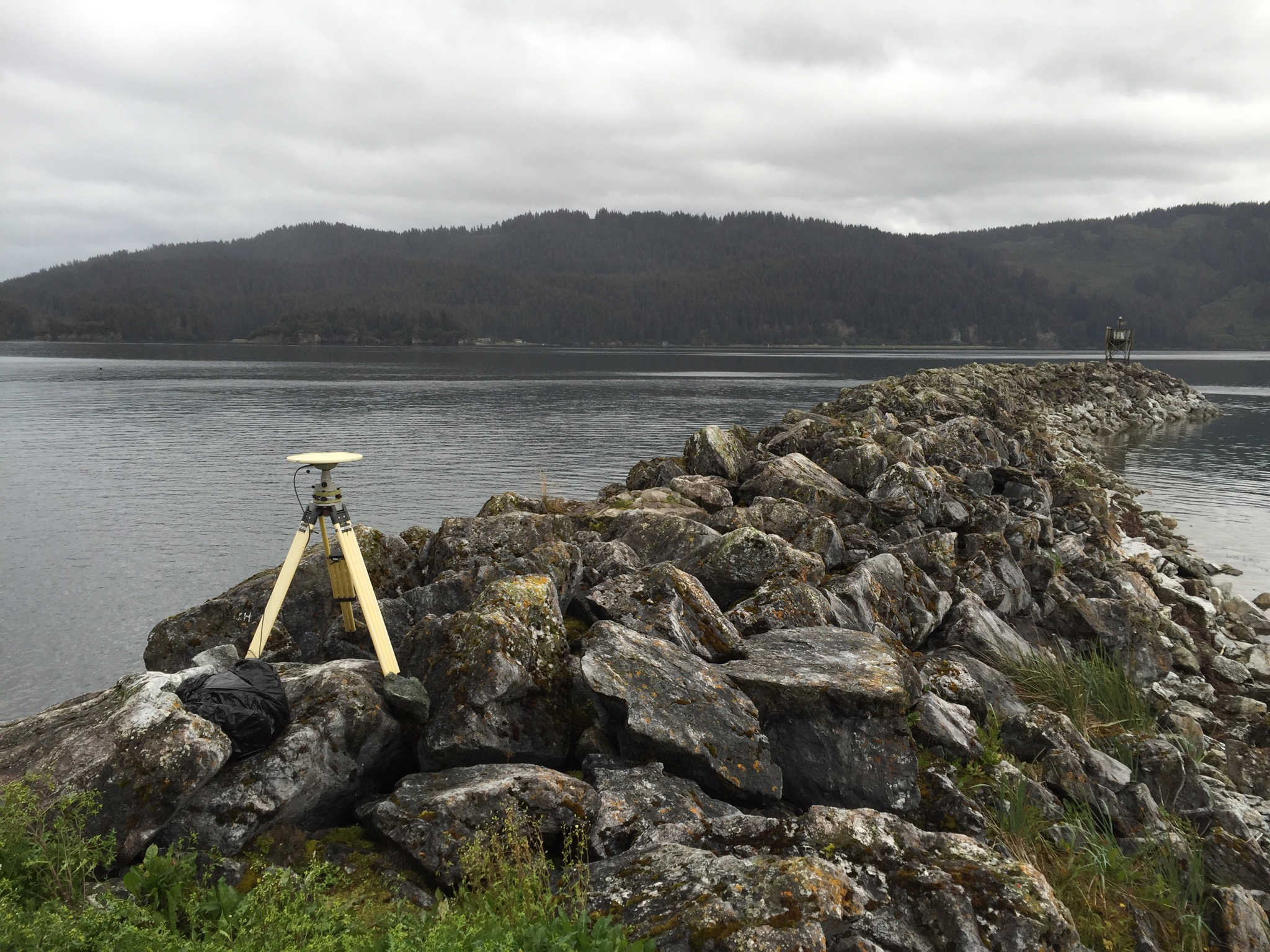
To be resilient, communities must know how heights on land compare with local sea level. The relationship is critical in understanding tsunami impacts and planning evacuation routes. But as a result of rising sea levels and land changes, this relationship can change.
NOAA National Ocean Service's National Geodetic Survey defines and maintains the National Spatial Reference System, a consistent, coordinate system that detects changes, assesses vulnerability, and informs safe design.
The above photo shows the reestablishment of height on a tidal benchmark in Seldovia, Alaska, a tectonically active area.
NOAA protects lives and property 24/7
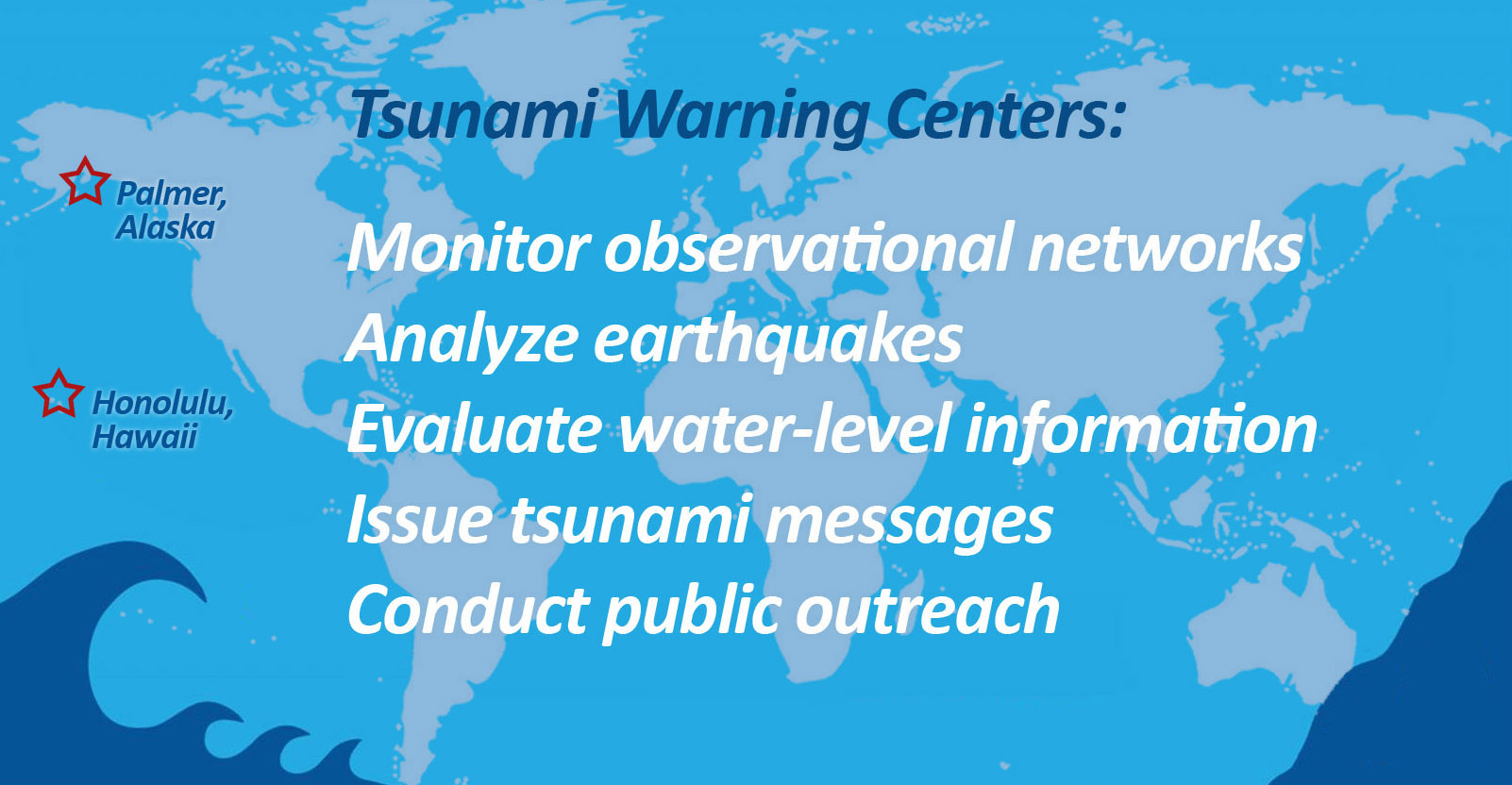
The Pacific Tsunami Warning Center serves Hawaii, U.S. Pacific and Caribbean territories and the British Virgin Islands.
It’s the primary international forecast center for the Pacific and Caribbean basins.
The National Tsunami Warning Centerserves the continental U.S., Alaska and Canada.
Detecting Tsunamis
Tsunami Warning Center messages are based on seismic and sea-level data from around the world
When an earthquake occurs, seismic networks provide information about an earthquake’s location, depth and magnitude.
This helps warning centers determine whether the earthquake may have generated a tsunami and if messages should be issued.
When the earthquake meets certain criteria, the centers use sea-level data to ascertain the existence of a tsunami.
DART® systems provide early detection, measurement, and real-time reporting of tsunamis. DART stands for Deep-ocean Assessment and Reporting of Tsunami systems.
DART systems sense pressure changes on the ocean bottom caused by passing tsunamis and communicate these changes to the Tsunami Warning Centers. The latest systems can be placed closer to tsunami sources, enabling earlier detection.
NOAA Research's Pacific Marine Environmental Laboratory developed DART. The U.S. network is operated by NOAA National Weather Service's National Data Buoy Center.
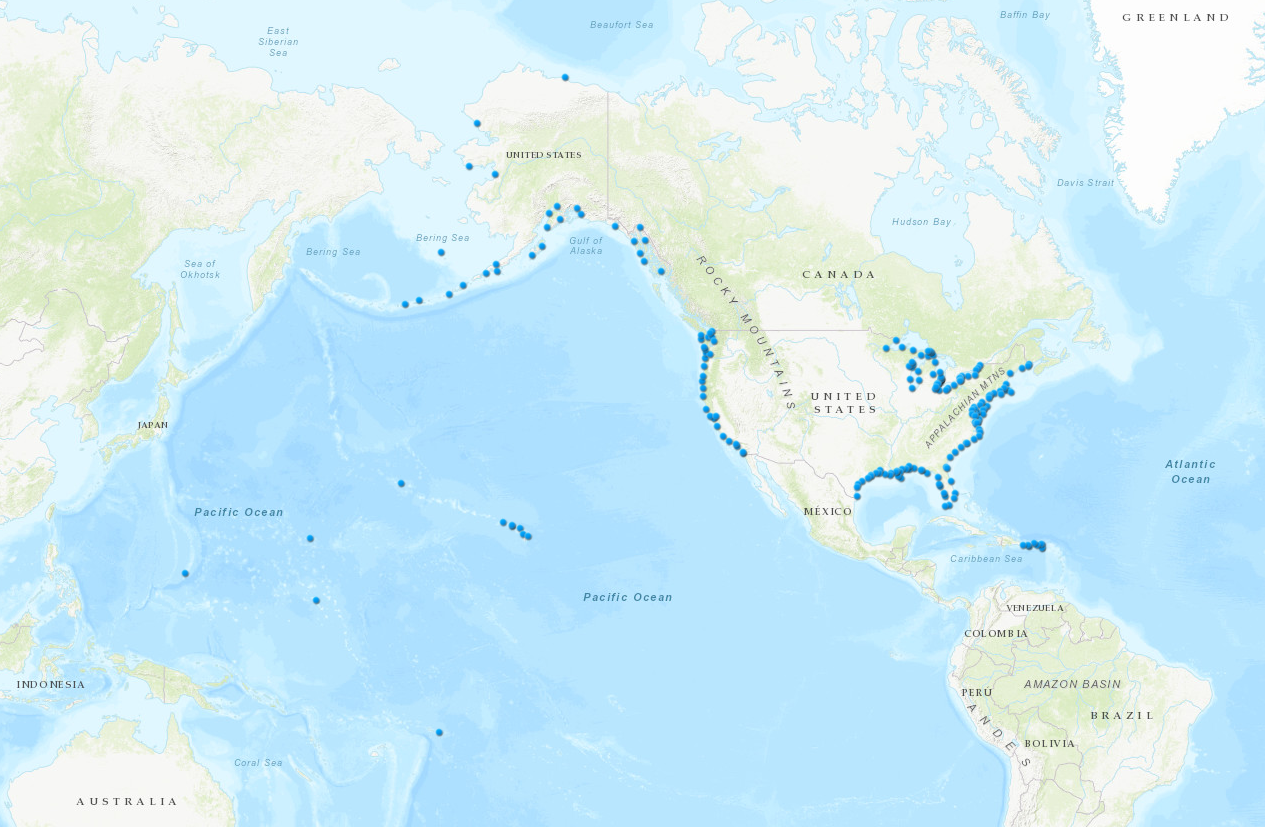
Closer to shore, continuously operating coastal water-level stations provide information about tsunami wave heights and arrival times to inform messages and validate models.
NOAA’s National Ocean Service Center for Operational Oceanographic Products and Services operates most of the stations that support the U.S. Tsunami Warning System.
The center manages the National Water Level Observation Network, which is the foundation of a permanent and comprehensive system for observing, communicating, and assessing the impact of changing water levels nationwide.
Forecasts and warnings

When a tsunami is detected, data from the seismic and sea-level networks are fed into NOAA’s tsunami forecast models. These models are critical for refining tsunami messages and informing local decisions about evacuations and beach and road closures.
Tsunami forecast models depend, in part, on Digital Elevation Models built by NOAA Satellite and Information Service’s National Centers for Environmental Information for specific coastal zones.
Coastal Digital Elevation Models detail ocean depth and land features to model how tsunamis and other natural events may affect given coastal areas.
Response and recovery
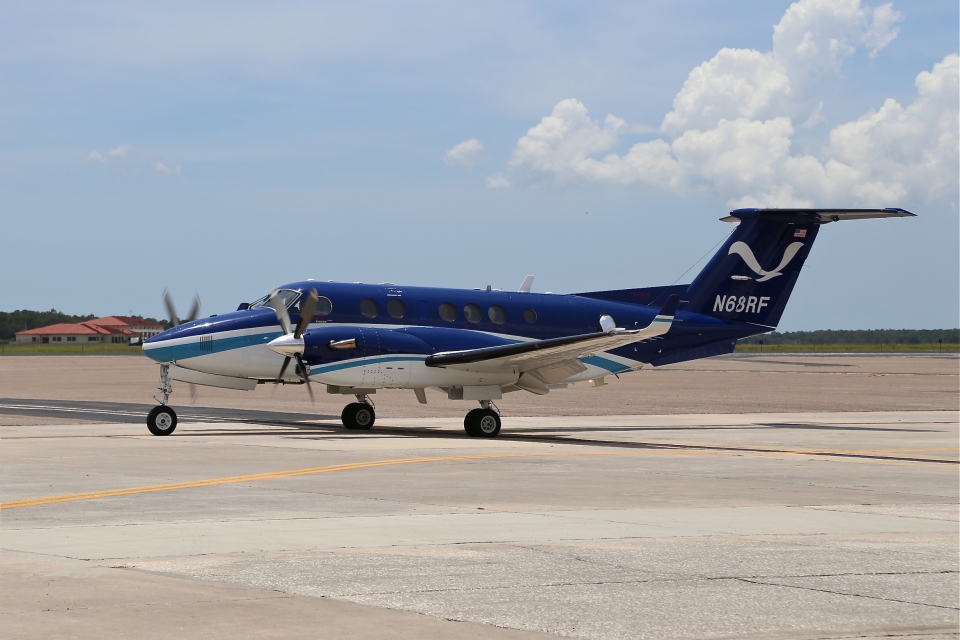
If a tsunami hits the U.S., NOAA’s Office of Marine and Aviation Operations and National Geodetic Survey can mobilize quickly to capture high-resolution aerial images of affected areas.
Collected with specialized cameras aboard NOAA aircraft, primarily this versatile King Air 350, the imagery is a crucial and cost-effective way of determining the extent of damage to homes, communities, infrastructure, major ports, waterways, and coastlines.
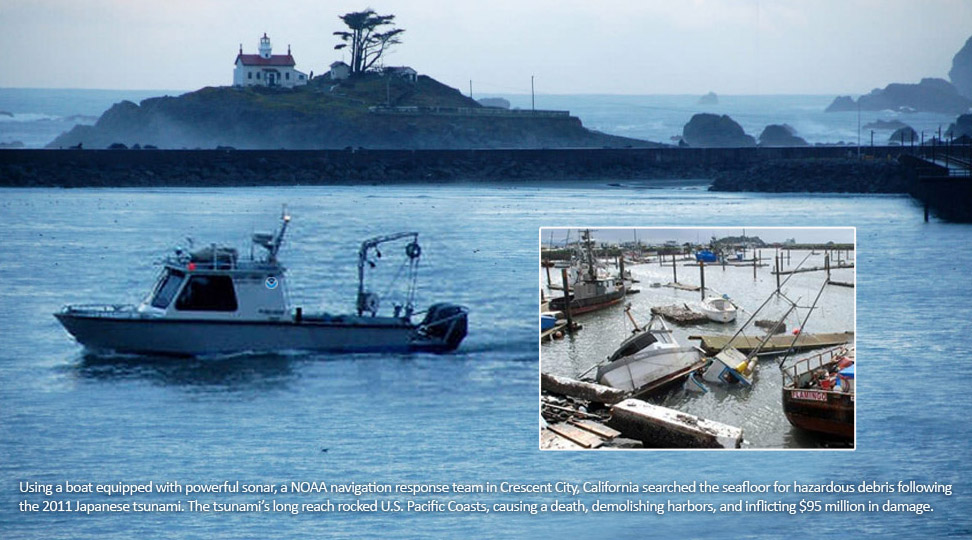
Navigation Response Teams from NOAA’s Office of Coast Survey also remain on call, mobilizing assets and personnel as needed.
These teams protect life and property from hidden underwater dangers and speed resumption of shipping in critical ports and shipping lanes.
Even minor delays in shipping cost the U.S. economy millions of dollars, and safely reopening ports as quickly as feasible is a priority for American commerce.
When the tsunami that struck Japan in 2011 swept back to sea, it took much of what was in the more than 200-square-mile inundation zone with it.
Materials began floating out of communities and across the Pacific.
NOAA's Office of Response and RestorationMarine Debris Program responded to the debris that came ashore in the US, and the invasive species that often came with it.
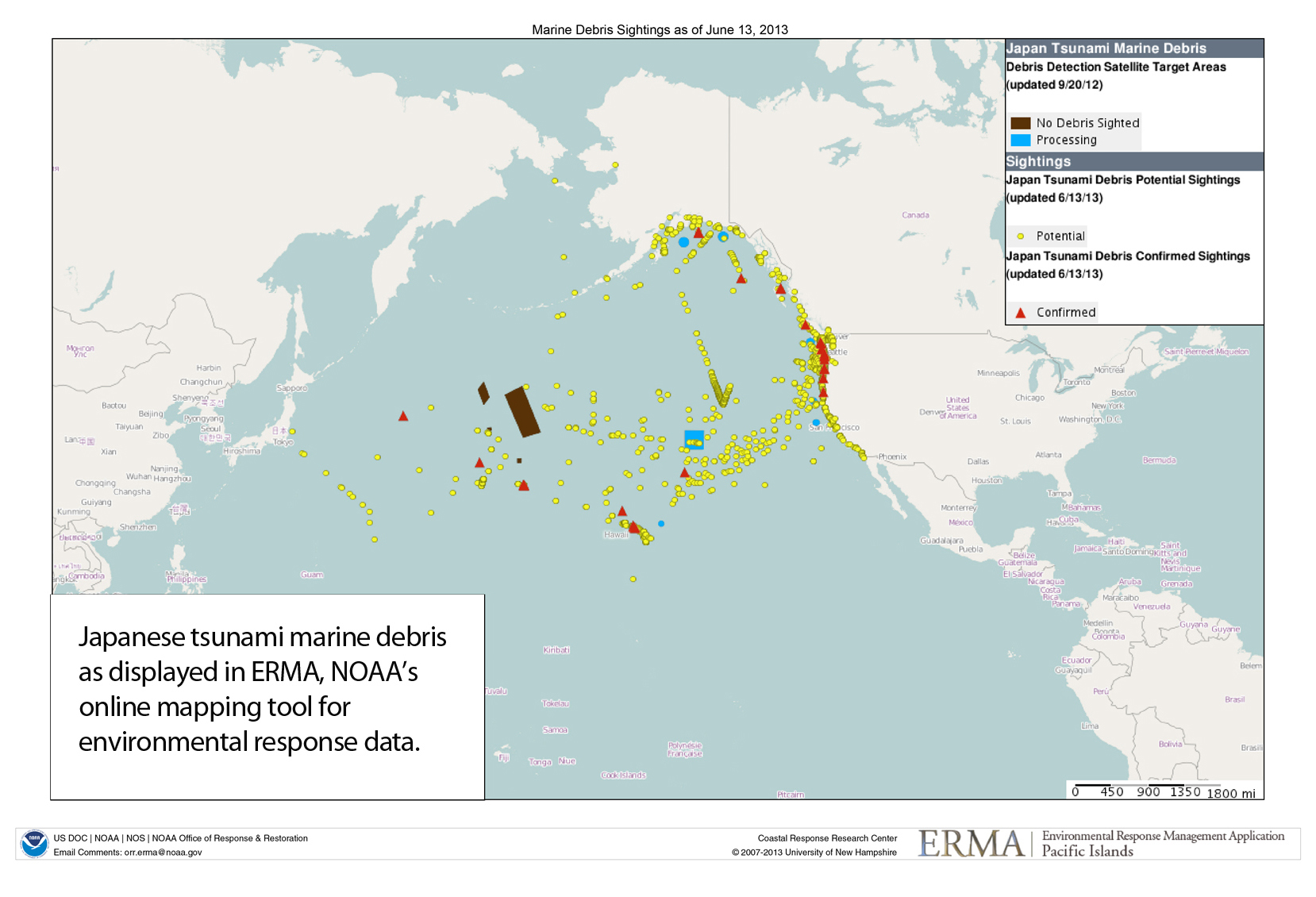
NOAA contributed to a comprehensive report that delves into marine-related science, response and communications.
The report serves as an important international framework for addressing the short- and long-term aftermath of a tsunami.
NOAA's global reach
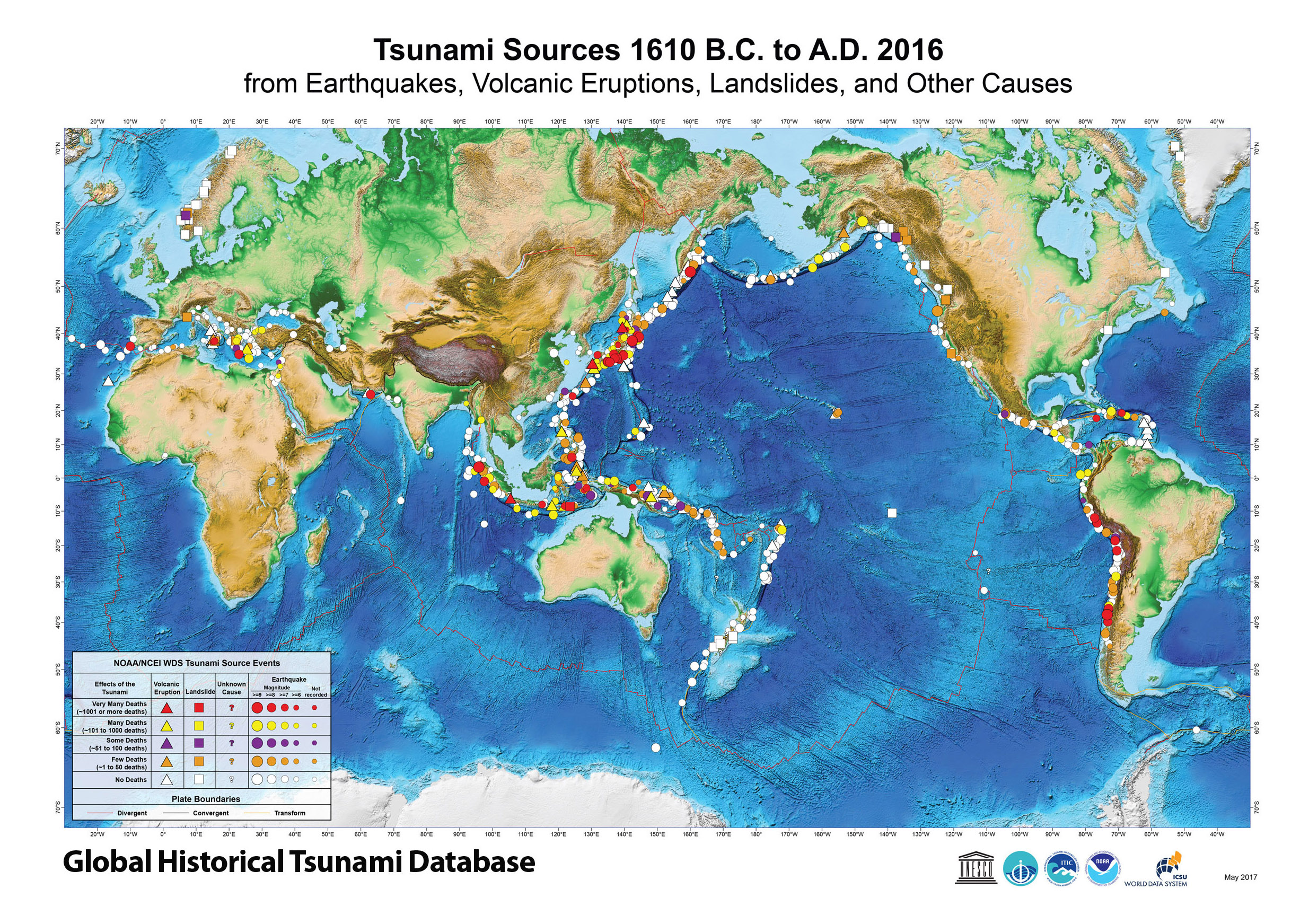
NOAA’s efforts stretch around the globe.
The National Weather Service provides forecast and observation guidance and preparedness services to UNESCO’s Intergovernmental Ocean Commission. This is largely through the Pacific Tsunami Warning Center, International Tsunami Information Center offsite link, and the Caribbean Tsunami Warning Program.
The National Centers for Environmental Information and the World Data Service for Geophysics host the Global Historical Tsunami Database, which is used to identify vulnerable regions, validate forecast models, help position warning systems, and prepare for future events.
"With just 17 minutes between the earthquake
and the arrival of the first observable tsunami
waves, people in Tula knew what to do."
Lisa Togiai
Department of Homeland Security,
American Samoa and Tula resident
“Nature’s danger signs are well understood in American Samoa. But we knew we needed to do more in training, exercise and raising public awareness. In 2009, NOAA and our partners, including the American Samoa Department of Homeland Security (ASDHS), reached out to educate the community about preparing for a local tsunami threat.
In the worst case, there would be only 10-15 minutes before the first wave attacked. People needed a response plan and to know how to self-evacuate. Schools located along the shoreline were especially vulnerable.
Luckily, ASDHS planned a tsunami evacuation exercise on September 27, 2009 for Matatula Elementary School in Tula village.
On September 29, a radio communication exercise was planned for the main port of Pago Pago, and VHF radios were distributed. When the magnitude 8.1 earthquake and tsunami struck that same day, the radios became our lifeline.
With just 17 minutes between the earthquake and the arrival of the first observable tsunami waves on American Samoa, people in Tula were prepared and knew what to do, especially the school children. The whole community moved to higher ground and, although many people in the region died in the tsunami, everyone in Tula was safe.
The tsunami exercise was still fresh in their minds.”
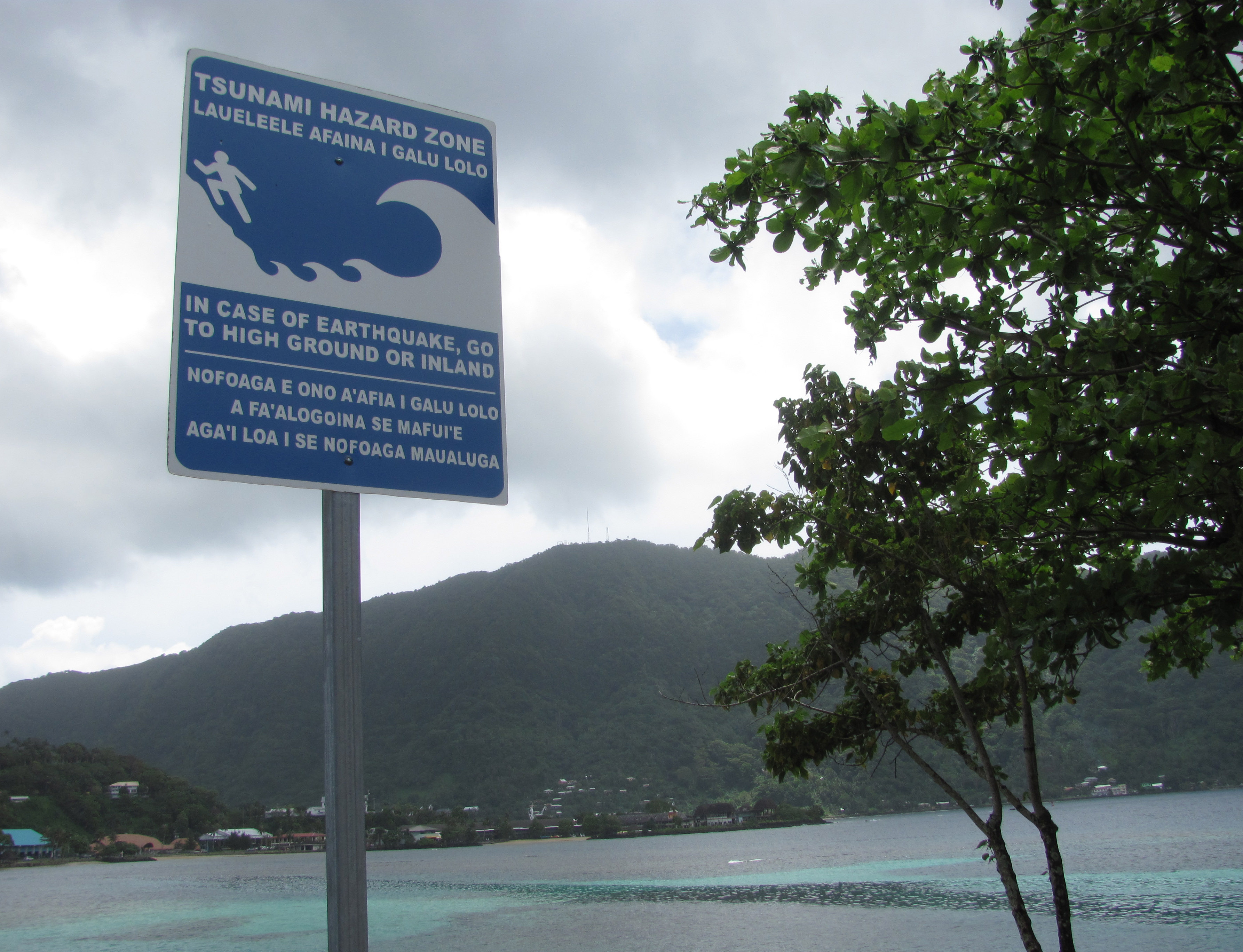
NOAA and our partners helped people in Tula prepare for tsunamis, and when a tsunami struck in 2009 the community knew what to do. Tula and neighboring communities continued working on preparedness and mitigation and, in 2012, NOAA recognized the U.S. territory of American Samoa as TsunamiReady.
Major NOAA advances in mitigating tsunamis
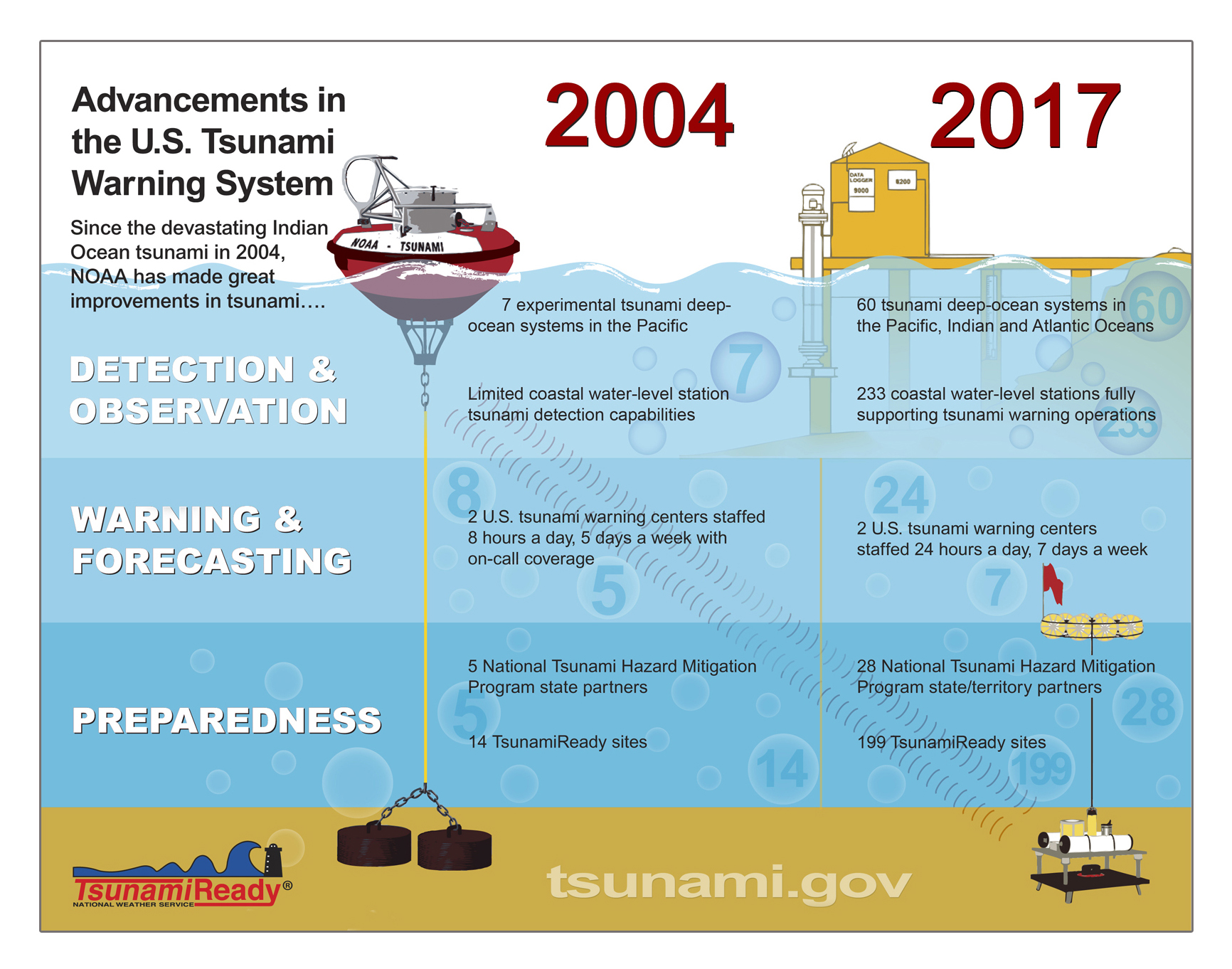
NOAA continues to make advances in tsunami detection, forecasting and warning capabilities.
There is urgency to doing this because, however infrequent, tsunamis will strike again. Every coastal community is at risk.
As a result of recent investments in the U.S. Tsunami Warning System, U.S. and international coastal communities are better prepared to respond to and recover from a tsunami. Warning products are more timely and accurate, observation technologies are more robust, life-saving information is more accessible, and mitigation activities are considerably stronger and more widespread.
Tsunamis can’t be prevented, but NOAA and our partners are helping coastal communities significantly reduce the risks.


